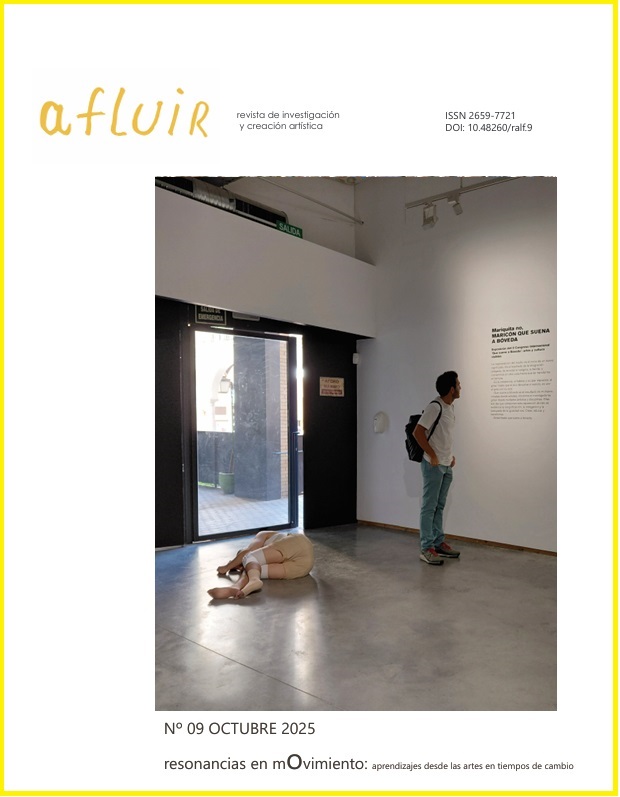Looking for the musical meaning
the semiotically informed interpretation as alternative to the formalist analisys
Abstract
Historically, it has been widely accepted—without controversy—that music not only possesses meaning but is also capable of conveying it. Indeed, countless artists and philosophers of art have gone so far as to describe it as the “supreme language.” Similarly, it is generally understood that music operates and communicates within a metatextual (beyond its written form, the score) and temporal dimension. In other words, the mere study of its formal properties is insufficient to access the symbolic plane in which it unfolds. Nevertheless, the discipline that has traditionally sought to analyze music has largely remained within formalist paradigms, reducing its symbolic and metatextual nature to its immanent properties: formalism.
This article seeks to propose a new perspective on the matter—a sort of paradigm shift in conceiving the musical object as a sign: Semantically Informed Interpretation (SII). Drawing on semiotics (given that musical language exists within a semiotic ecosystem), hermeneutics (since performers, theorists, and audiences alike make interpretive inferences about the musical work), and narratology (by framing music as a language endowed with symbolic properties), SII positions itself as an alternative to traditional approaches to music and its meaning.
References
Adorno, T. W. (2009). Disonancias: introducción a la sociología de la música. Akal.
Agawu, K. (1991). Playing with Signs: A Semiotic Interpretation of Classic Music. Princeton University Press
Allanbrook, W. (1983). Rhythmic Gesture in Mozart: La Nozze di Figaro and Don Giovanni. University of Chicago Press.
Almén, B. (2008). A Theory of Musical Narrative. Indiana university Press.
Attali, J. (1995). Ruidos: Ensayo sobre la economía política de la música. Siglo Veintiuno.
Beard, D., & Gloag, K. (2005). Musicology, The Key Concepts. Routledge.
Chua, D. (2009). Absolute music and the construction of meaning. Cambridge University Press.
Cross, I. (2005) Music and meaning, ambiguity and evolution. Cambridge University Press.
Dahlhaus, C. (1999). La idea de la música absoluta. Idea Música.
Eco, U. (1992). Los límites de la interpretación. Lumen.
- (1995). Interpretación y sobreinterpretación. Cambridge University Press.
Fubini, E. (2020). La estética musical desde la antigüedad hasta el siglo XX. Alianza Música.
Gadamer, H. G. (1999). Verdad y método. Sígueme.
González Aguado, F. (2003). El significado musical y la emoción de la música. Atopos.
Harnoncourt, N. (2006). La música como discurso sonoro. Acantilado.
Hatten, R. (2004). Interpreting Musical Gestures, Topics, and Tropes: Mozart, Beethoven, Schubert. Indiana University Press.
- (2018). A Theory of Virtual Agency for Western Art Music. Indiana University Press.
Jackendoff, R., & Lerdahl, F. (1983). A generative theory of tonal music. MIT Press.
Jakobson, R. (1960). Linguistics and Poetics. In Style in languaje (pp. 350–377). MIT Press.
Juslin, P. (2005). From Mimesis to Catharsis: Expression, Perception, and Introduction of Emotion in Music. Musical Communication, 85–116.
Karbusicky, V. (1987). The index sign in music. Semiotica, 66, 23–35.
Kivy, P. (2001). New essays on musical understanding. Clarendon Press.
- (2007). Music, language and cognition. Oxford University Press.
Kramer, L. (1996). Classical Music and Postmodern Knowledge. University of California Press.
- (2011). Interpreting music. University of California Press.
López-Cano, R. (2000). Música y retórica en el Barroco. Unam.
- (2022). La música cuenta. Retórica, narratividad, dramaturgia, cuerpo y afectos. esmuc.
Marrades Millet, J. (2000). Música y significado. Teorema, 19, 5–25.
McClary, S. & Leppert, R. (1987). Music and Society: The Politics of Composition, Performance and Reception. Cambridge University Press.
Meyer, L. (1994). Music, the art and ideas: patterns and predictions in thwentieth-century culture. University of Chicago Press.
- (2001). Emoción y significado en la música. Alianza Música.
Nattiez, J. (1990). Music and discourse: toward a semiology of music. Princeton University Press.
Okiñena, J. (2021). La interpretación musical como proceso artístico y científico. Deusto.
Palacios Quiroz, R. (2012). La pronuntiatio musicale: une interprétation rhétorique au service de Händel, Montéclair, C. P. E. Bach et Telemann. [Tesis doctoral]. Universidad de la Sorbona, París.
Paz, O. (1983). Los signos en rotación y otros ensayos. Alianza Editorial.
Peirce, Ch. (1935). Logic as semiotic: The Theory of Signs. Dover Publications.
Rafmann, D. (1993). Language, Music, and Mind. MIT Press.
Ratner, L. (1980). Classical Music: Exrpression, Form and Style. Macmillan USA.
Rink, J. (2006). La interpretación musical. Oxford University Press.
Said, E. (2007). Elaboraciones musicales. Ensayos sobre la música clásica. Debate.
Sanz, A (2025). Interpretación musical desde la narrativa: propuesta metodológica y análisis para un nuevo paradigma en la concepción intermodal de la obra musical [Tesis doctoral]. Universidad de Jaén.
- (2025b). Por una retórica musical semiótica y narratológicamente informada. Tercio Creciente, 28, (pp. 125-172). https://dx.doi.org/10.17561/rtc.28.9636
Saussure, F. (2018). Curso de Lingüística general. Akal.
Vattimo, G & Rovatti, P. (1988). El pensamiento débil. Cátedra.



